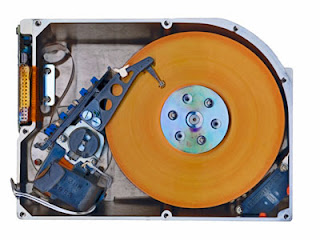I am often asked the question about the difference between a primary
and a logical partition. In this post I will do my best to explain the
difference between the two.
If you open Disk Manager in Windows you will see your drive volumes and their corresponding partition type under the “Status” column:
Most partitions are primary partitions. If you have more than one partition, the first usable partition (one that can hold data) is almost always a primary. Primary partitions are marked with a dark-blue stripe by default.

The old-school approach is to have only one primary partition, followed by an extended partition. This is no longer needed for NTFS volumes; in fact, if you’re setting up a dual-boot system, each OS must have its own primary partition.

The extended partition is a holdover from earlier days, and was used when a drive had two or more partitions. It doesn’t actually hold data, it merely serves as a container for one or more logical drives.
Extended partitions and logical drives are more or less obsolete today (Vista’s Disk Management tool can’t even create them), but you may see them on older partitioned drives.
The extended partition is, by default, shown as a dark-green outline surrounding any logical drives. If you have a drive with an extended partition, each volume inside is called a logical drive. By default, logical drives are identified in light blue.
If you open Disk Manager in Windows you will see your drive volumes and their corresponding partition type under the “Status” column:
Most partitions are primary partitions. If you have more than one partition, the first usable partition (one that can hold data) is almost always a primary. Primary partitions are marked with a dark-blue stripe by default.

The old-school approach is to have only one primary partition, followed by an extended partition. This is no longer needed for NTFS volumes; in fact, if you’re setting up a dual-boot system, each OS must have its own primary partition.

The extended partition is a holdover from earlier days, and was used when a drive had two or more partitions. It doesn’t actually hold data, it merely serves as a container for one or more logical drives.
Extended partitions and logical drives are more or less obsolete today (Vista’s Disk Management tool can’t even create them), but you may see them on older partitioned drives.
The extended partition is, by default, shown as a dark-green outline surrounding any logical drives. If you have a drive with an extended partition, each volume inside is called a logical drive. By default, logical drives are identified in light blue.





























No comments:
Post a Comment